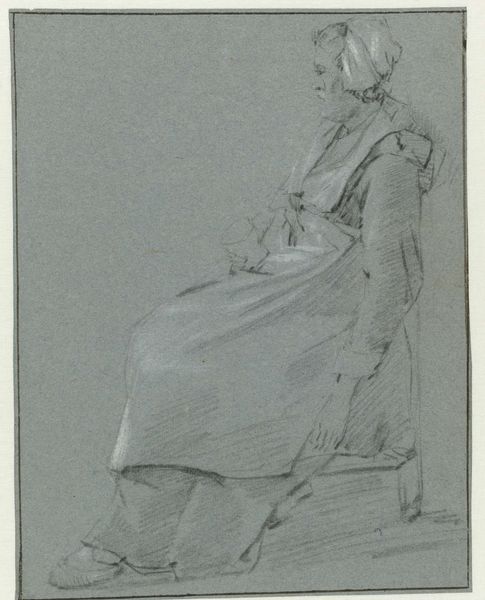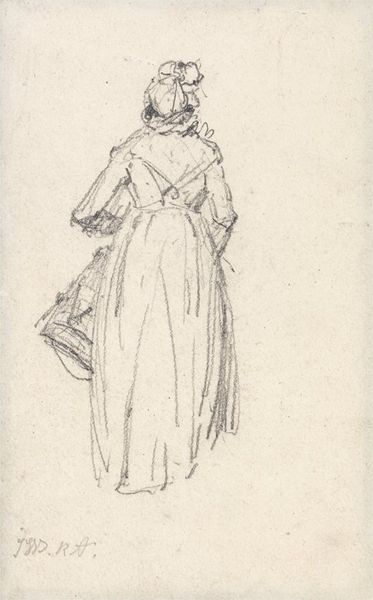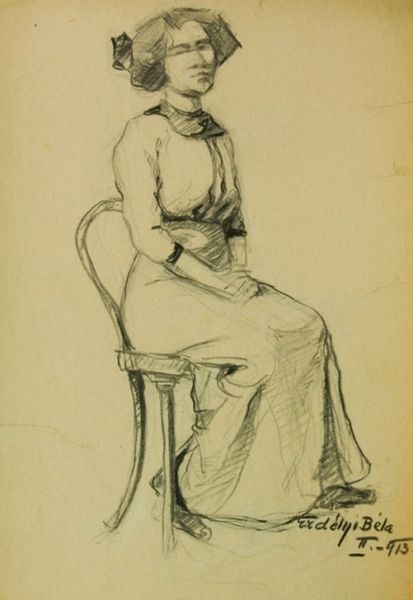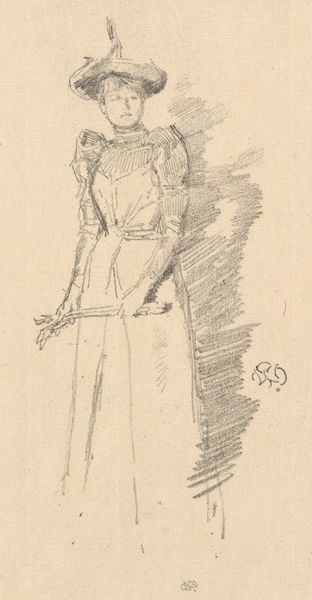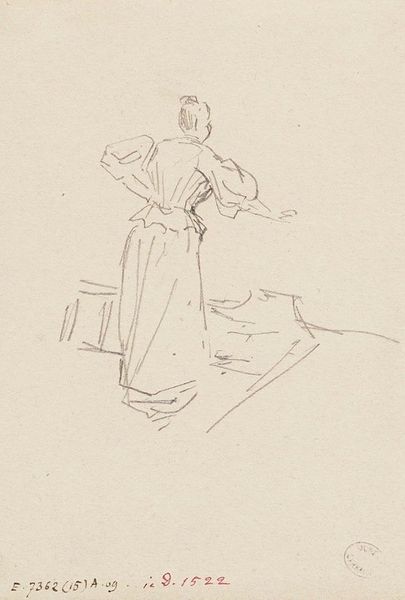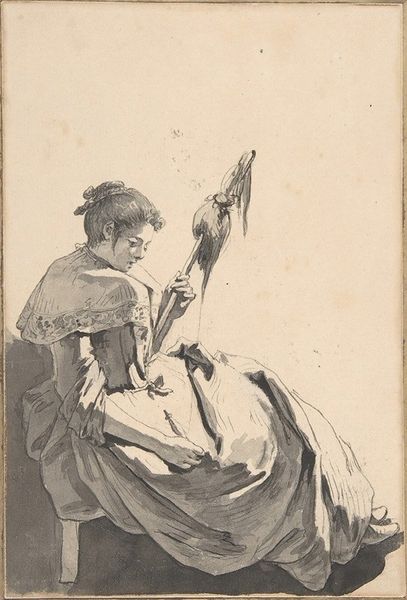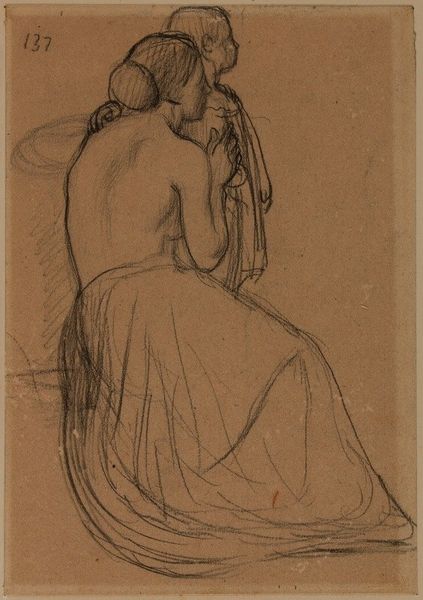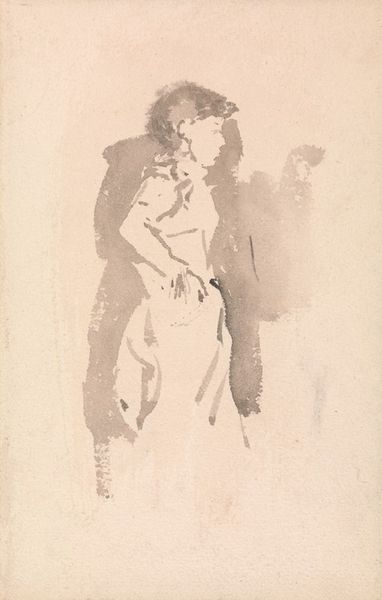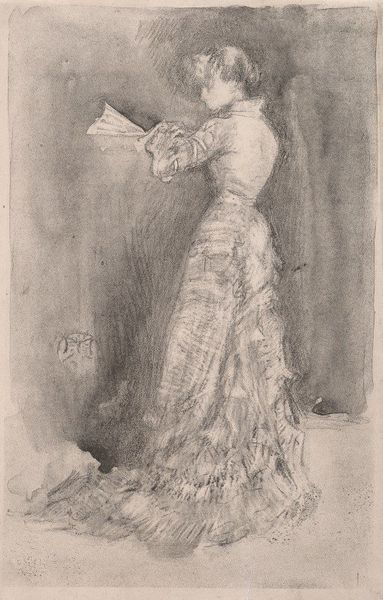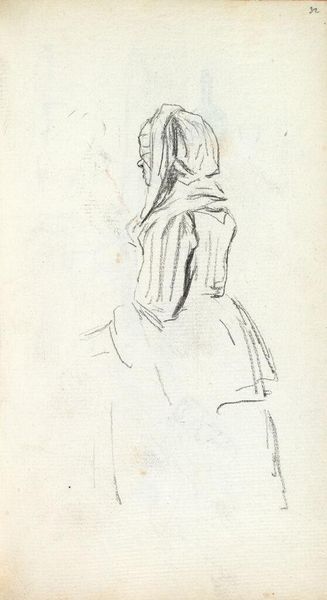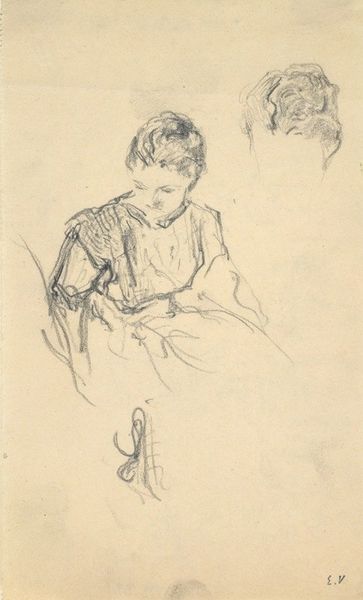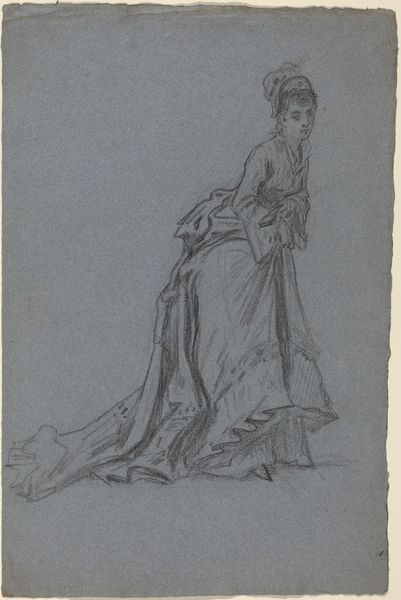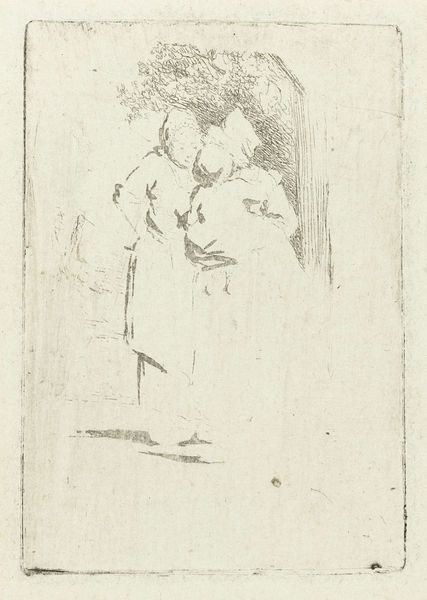
drawing, pencil
#
portrait
#
drawing
#
pencil sketch
#
figuration
#
pencil
Copyright: Public Domain: Artvee
Curator: There's a delicate poise to this piece, isn't there? A certain graceful reserve... Editor: It’s "Elegant Lady Seated in a Chair" by Jules Chéret, created around 1900, done with pencil on paper. The flowing lines suggest a study for something more grand. I think it hints at the broader dynamics of leisure and the portrayal of women at that time. Curator: The drawing really does capture the essence of the Belle Époque! Note the economy of the line, yet every detail seems to speak volumes about her posture, dress. The soft peach of the paper, combined with the delicate red chalk. How might that interplay speak of the consumerism surrounding female beauty during that time? Editor: Undoubtedly. But what I find interesting is how the form emerges from these layered, almost hesitant pencil strokes. Consider the chair. See how its structure provides a kind of visual grounding. Do you think it implies a constraint on her freedom? Curator: Certainly it brings a stability and quiet strength in an industrializing and urbanizing world, that society both literally and figuratively relied upon. This was during a transition in which furniture, dress-making, and portraiture became available for purchase among a growing consumer class, so it might just reference all those opportunities opening for business. The pose also shows her elegance and style. Editor: Yet look how the seemingly casual drawing actually reinforces an expected social composure through its very form. The carefully calculated asymmetry, the delicate balance of line and shadow… it all speaks to a desire for perfection within those constructed gender and class roles. Curator: Well, on the other hand, a commercial artist like Chéret surely understood how his rapid sketch could also act as an efficient production process of images for an industry booming from mass production of furniture to portraits to the fashions and tastes. Editor: It is a window into that world, isn't it? Each deliberate or even incidental line serves a purpose beyond mere representation. A truly thought-provoking snapshot, in the literal sense. Curator: Yes, a revealing instance. When art captures both the making and what’s made, then we might understand what its values once were and might mean to us.
Comments
No comments
Be the first to comment and join the conversation on the ultimate creative platform.
